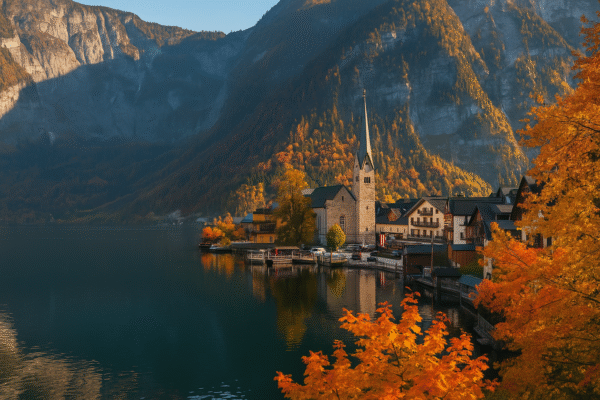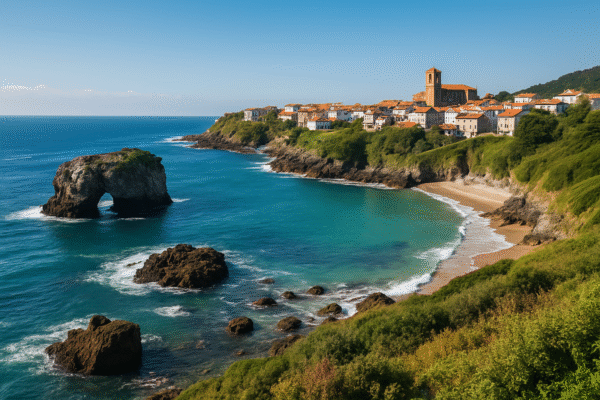Spain’s Hidden Gems in 2025: Where Sustainability, Heritage, and Local Charm Meet
While Spain remains one of Europe’s most visited countries—boasting sun-drenched beaches, world-famous cities, and iconic cultural landmarks—overtourism has strained many of its top destinations. In response, Spain’s tourism authorities are spotlighting its lesser-known but equally rich regions, inviting visitors to explore beyond Barcelona and the Balearics. For those seeking authenticity, sustainability, and tranquility, the regions of Galicia, La Rioja, Extremadura, El Hierro, and Teruel offer compelling alternatives.
Galicia: Untamed Beauty Along Spain’s Green Coast
Tucked into Spain’s northwestern tip, Galicia is a lush, misty region that offers rugged coastlines, Celtic traditions, and a cuisine rooted in the sea. Its wild Atlantic shores, like the iconic Playa de las Catedrales, are known for striking rock arches and dramatic tides. Inland, travelers can follow the Senderos Azules—officially designated “Blue Trails”—which weave through fishing villages and remote estuaries.
The Galician food scene is also a draw for sustainable travel, with locally caught seafood like pulpo a la gallega (octopus with paprika) and gooseneck barnacles served in coastal taverns. Wine lovers can explore the Rías Baixas region, home of the Albariño grape, often dubbed the “white jewel of Galicia.” Government tourism initiatives in 2025 focus on preserving this region’s cultural integrity and ecological balance, promoting rural stays and low-impact tourism options.
La Rioja: Spain’s Quiet Wine Capital
Despite producing some of Spain’s most prestigious wines, La Rioja remains off the radar for many international tourists. With over 500 bodegas, including architectural marvels like Marqués de Riscal and historic cellars like CVNE, the region invites immersive wine experiences. Visitors can participate in harvest festivals, blend their own wine, or cycle between vineyards nestled in the Pyrenean foothills.
Cultural treasures abound in towns like Logroño and Haro, while the UNESCO-listed monasteries of San Millán de la Cogolla showcase early examples of written Spanish. The local government’s rural tourism programs in 2025 are focused on revitalizing village economies through agritourism and slow travel, making La Rioja a prime example of wine tourism done sustainably.
Extremadura: Timeless Heritage and Unspoiled Landscapes
Bordering Portugal in western Spain, Extremadura is a region steeped in layers of history. Its ancient cities—Mérida, Cáceres, and Guadalupe—are UNESCO World Heritage sites that remain blissfully uncrowded. Mérida’s Roman Theatre hosts open-air performances every summer, while Cáceres offers one of Europe’s best-preserved medieval cityscapes.
The Royal Monastery of Santa María de Guadalupe continues to be an important pilgrimage site, drawing those seeking spiritual and architectural wonder. Nature lovers can head to Monfragüe National Park, a birdwatcher’s paradise where black vultures and Iberian eagles thrive. In 2025, Extremadura’s regional tourism board is promoting a “Travel Slow, Stay Long” initiative that encourages extended visits, fostering a deeper connection between visitors and local communities.
El Hierro: The Eco-Conscious Island of the Canaries
Far from the tourist-packed beaches of Tenerife or Gran Canaria, El Hierro stands as the Canary Islands’ greenest and most sustainable island. A designated UNESCO Biosphere Reserve, El Hierro aims to become the first island in the world fully powered by renewable energy, thanks to innovative wind-hydro plants.
The island’s remoteness—no direct international flights—means it sees fewer tourists, making it ideal for nature-based getaways. Hike through lava fields, dive into pristine marine reserves, or relax on secluded volcanic beaches like El Verodal. In 2025, the island’s government is working with Spain’s Ministry of Ecological Transition to scale up green infrastructure and ecotourism models that limit environmental impact while supporting local livelihoods.
Teruel: Spain’s Quiet Cultural Treasure
Situated in the mountainous heart of Aragon, Teruel is one of Spain’s least-visited provinces—but that’s exactly its charm. Its capital city features stunning Mudejar architecture, a blend of Islamic and Gothic styles unique to Aragon and protected by UNESCO. Nearby villages like Albarracín, often called Spain’s most beautiful village, are ideal for cultural explorers seeking authenticity.
Teruel is also part of “Dinosaur Territory,” a tourism initiative highlighting fossil sites and paleontological museums that make it a hit for families and science lovers. With wild swimming spots, medieval castles, and truffle foraging experiences, Teruel is a quiet destination where visitors can immerse themselves in rural Spanish life. In 2025, Aragon’s tourism board is investing in heritage trails and community-run accommodations to preserve Teruel’s cultural integrity while inviting responsible exploration.
Sustainable Travel is Spain’s New Frontier
Spain’s lesser-known regions are becoming leaders in sustainable tourism, offering visitors the chance to connect with the country’s diverse landscapes, cuisines, and cultures without contributing to the pressures of mass travel. By choosing destinations like Galicia, La Rioja, Extremadura, El Hierro, and Teruel, travelers not only enjoy a richer and more personal experience, but also help preserve what makes Spain so uniquely enchanting.
These regions represent a vision of tourism that values local identity, environmental stewardship, and cultural depth—making them essential stops for the mindful traveler in 2025 and beyond.
For more travel news like this, keep reading Global Travel Wire



















